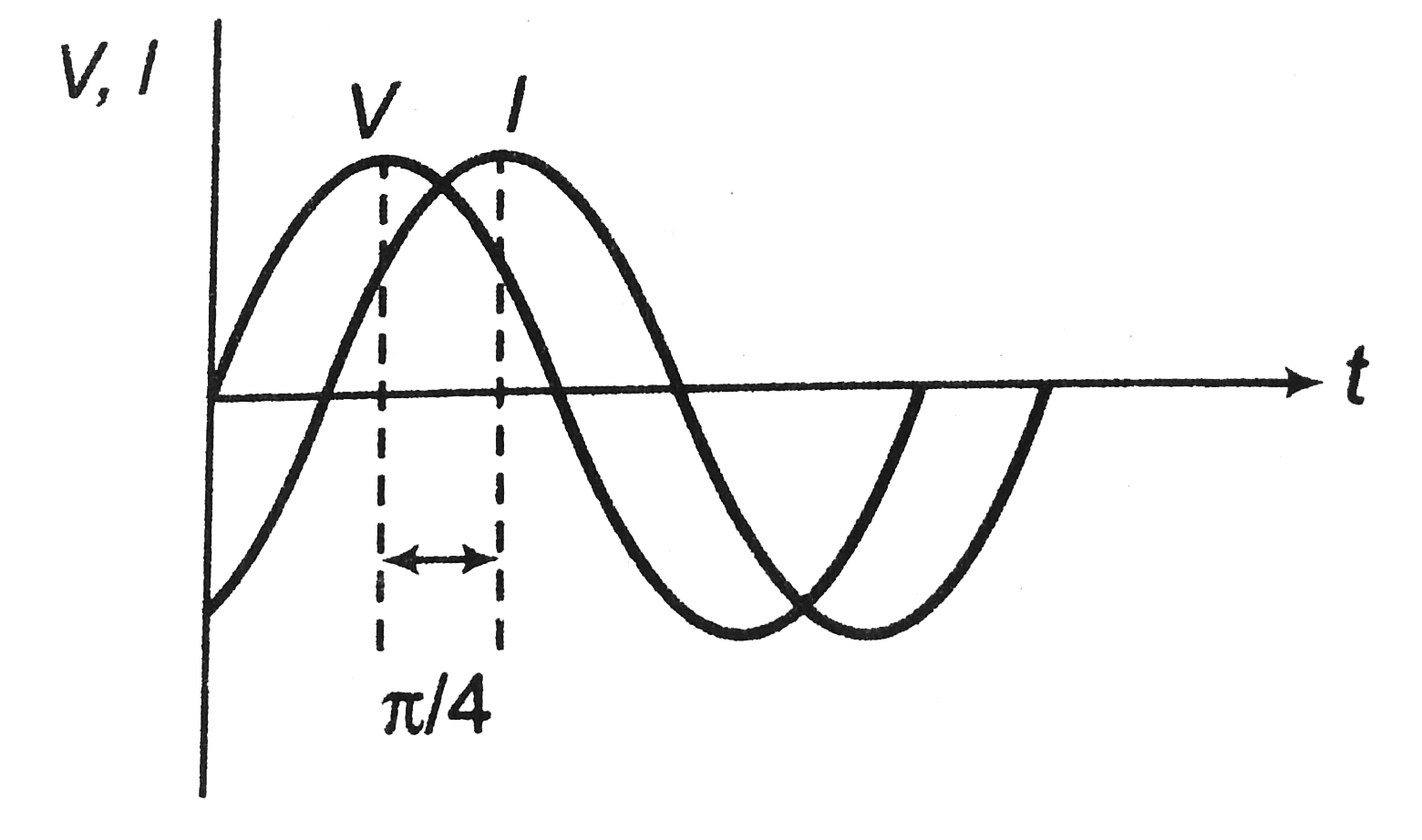An AC voltage V=20sin200πt is applied to a series LCR circuit which drives a current I=10sin(200πt+π3).The average power dissipated is:
21.6W
200W
50W
173.2W
To calculate the average power dissipated in the given LCR circuit with the applied AC voltage and current, we can follow these steps:
Step 1: Identify the given values
The AC voltage is given by:
V=20sin(200πt)
The current is given by:
I=10sin(200πt+π3)
Step 2: Calculate the RMS values of voltage and current
The root mean square (RMS) value of voltage Vrms can be calculated from the peak voltage Vmax:
Vrms=Vmax√2=20√2=20×1√2=10√2
The RMS value of current Irms can be calculated from the peak current Imax:
Irms=Imax√2=10√2=10×1√2=5√2
Step 3: Determine the phase difference
From the current equation, we can see that the phase difference ϕ between the voltage and current is:
ϕ=π3
Step 4: Calculate the power factor
The power factor cos(ϕ) can be calculated as:
cos(π3)=12
Step 5: Calculate the average power dissipated
The average power P dissipated in the circuit can be calculated using the formula:
P=Vrms⋅Irms⋅cos(ϕ)
Substituting the values we calculated:
P=(10√2)⋅(5√2)⋅12
Step 6: Simplify the expression
Calculating the product:
P=10⋅5⋅2⋅12=50 Watts
Final Answer
The average power dissipated in the circuit is:
P=50 Watts
---
The AC voltage is given by:
V=20sin(200πt)
The current is given by:
I=10sin(200πt+π3)
The root mean square (RMS) value of voltage Vrms can be calculated from the peak voltage Vmax:
Vrms=Vmax√2=20√2=20×1√2=10√2
Irms=Imax√2=10√2=10×1√2=5√2
From the current equation, we can see that the phase difference ϕ between the voltage and current is:
ϕ=π3
The power factor cos(ϕ) can be calculated as:
cos(π3)=12
The average power P dissipated in the circuit can be calculated using the formula:
P=Vrms⋅Irms⋅cos(ϕ)
P=(10√2)⋅(5√2)⋅12
Calculating the product:
P=10⋅5⋅2⋅12=50 Watts
The average power dissipated in the circuit is:
P=50 Watts
Topper's Solved these Questions
Similar Questions
A voltage V=V0sinωt is applied to a series LCR circuit. Derive expression for the average power dissipated over a cycle.
Under What condition (i) no power is dissipated even though the current flows through the circuit?
(ii) Maximum power is dissipated in the circuit?
View SolutionA voltage V=Vmsinωt is applied to a series L-C-R circuit. Derive the expression for the average power dissipated over a cycle. Under what condition (i) no power is dissipated even though the current flows through the circuit, (ii) maximum power is dissipated in the circuit ?
View Solution
Knowledge Check
In an A.C. circuit, E=100sin(500t) volt and I=1000sin(500t+π3)mA. The power dissipated in the circuit is
A10 WB100 WC50 WD25 WIn an AC circuit, V and I are given by V=100sin(100t)volts,I=100sin(100t+π3)mA. The power dissipated in circuit is
A104 wattB10 wattC2.5 wattD5 wattVoltage V and current I in AC circuit are given by V =50sin(50 t)volt,I = 50 sin (50t+π3)mA
The power dissipated in the ciruit isA5.0 WB2.5 WC1.25 WDzero
In an alternating series circuit,current is i=100sin(100t)A and voltage is V=100sin(100t+π/6)v .The average power dissipated in the ac circuit is
View SolutionIn an ac circuit,V and | are given by V=100sin(100t)" volts ,I=100sin(100t+(pi)/(3))mA .The power dissipated in circuit is
View SolutionIn an A.C. Circuit, the current is given by
I=6sin(200πt+π6)A
The initial value of the current is
View SolutionIn an circuit, V and I are given by V=150sin(150t)V and I=150sin(150t+π3)A. The power dissipated in the circuit is
View SolutionAn Ac voltage V=V0sin100t is applied to the circuit, the phase difference between current and voltage is found to be π4, then
 .
.
View Solution
